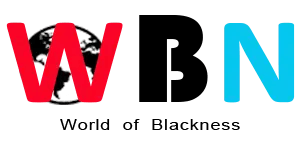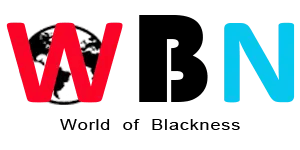Human resource management, or HRM for short, is the act of managing and developing a company’s people resources to meet its goals and objectives. HRM practices are the rules and guidelines that businesses use to manage their staff and foster a positive workplace culture. These procedures cover every stage of managing an employee’s life cycle, including hiring and selecting, training and development, performance evaluation, pay, benefits, and employee relations. An important discussion about the importance of HRM practices in business.
The following are some typical HRM procedures:
• Recruitment and selection:
The process of identifying, attracting, and selecting suitable candidates for a job.
• Training and development:
The process of enhancing employees’ skills, knowledge, and abilities through training and development programs.
• Performance appraisal:
The process of evaluating an employee’s performance and providing feedback on areas that need improvement.
• Compensation and benefits:
The process of providing competitive compensation packages, including salaries, bonuses, and benefits.
• Employee relations:
The process of managing relationships between employees and the organization to ensure a positive work environment.
• Health and safety:
The process of ensuring a safe and healthy workplace for employees. These procedures are crucial for the efficient administration of a company’s human resources and may boost worker productivity and engagement while also ensuring that they get the tools and assistance they need to do their jobs well. Two essential HRM procedures—performance evaluation and training and development—are intended to boost employee productivity and help the company reach its objectives. The effectiveness of these practices in boosting employee performance and organizational results will be compared and examined in the analysis that follows.
Performance Appraisal:
The practice of evaluating an employee’s job performance in relation to predefined criteria or objectives is known as performance appraisal. It is a crucial HRM procedure that offers data on worker performance and aids companies in determining where they may make improvements. The improvement of employee performance, the identification of training requirements, and the promotion of career growth are the main goals of performance evaluation. Setting performance objectives, giving feedback on performance, identifying areas for development, and deciding on rewards and penalties based on performance outcomes are common components. Performance reviews can be conducted annually or biannually, and they can also include peer evaluations and 360-degree feedback. The purpose of performance reviews is to raise employee productivity and performance, spot skill shortages, and offer growth opportunities. Effective performance assessment systems may boost worker motivation, job satisfaction, and productivity, according to research. A successful performance assessment system, for instance, improves employee engagement, job satisfaction, and organizational performance, according to research by Kavanagh, Thite, and Johnson (2018). Additionally, Chen and Huang’s (2019) comprehensive research found a favorable correlation between employee performance and organizational results and 6 performance assessment. Performance reviews do provide some difficulties, though. Lack of impartiality, inconsistent evaluations, and poor management-employee communication are common critiques. Organizations should make sure that performance evaluation systems are impartial, open, and founded on specific standards and goals to address these problems. Organizations may identify top performers, reward them appropriately, and provide them with chances for career advancement with the aid of performance evaluation. Additionally, it can aid in pointing out areas that need work, which will boost output and job satisfaction. However, if a performance review is viewed as unfair or misleading, it may also be a cause of employee unhappiness.
Training and Development:
Another crucial HRM practice is training and development, which entails enhancing employees’ knowledge, talents, and skills through instruction and training. Enhancing employee performance, fostering career growth, and enhancing organizational results are the main goals of training and development. Giving people the abilities, know-how, and competences, they need to do their jobs well is referred to as training and development. It entails determining the employee training needs, creating and putting into practice training programs, and assessing the success of these programmers. On-the-job training, off-site workshops and seminars, coaching, and mentoring are just a few of the various ways that training, and development may take place. Enhancing employee skills and abilities, increasing work satisfaction, and ultimately promoting organizational success are the main objectives of training and development. Research has repeatedly shown that training and development initiatives may enhance worker productivity, job satisfaction, and organizational results. For instance, training and development programs significantly enhance employee job performance and organizational results, according to research by Cheng and Ho (2018). Similarly, training and development are positively associated to employee performance and organizational results, according to a comprehensive review by Karim and Rehman (2019). Employee skills and competences may be improved via training and development, which boosts output, work satisfaction, and employee retention. By ensuring that staff members possess the information and abilities required to accomplish organizational goals, it may also contribute to the organization’s overall success. Despite the advantages, training and development initiatives encounter several difficulties, such as a lack of funding, opposition to change, and a challenge in determining the programs’ efficacy. To address skill shortages and employ several training techniques, including on-the-job training, e-learning, and coaching, organizations should make sure that training and development programs are in line with their aims.
Comparison and Analysis:
Performance evaluation and training and development are crucial HRM procedures that can enhance worker productivity and benefit the organization. They do, however, vary in several ways. While training and development concentrate on improving employees’ knowledge and abilities, performance assessment focuses on assessing employee performance and delivering feedback. Additionally, training and development are more proactive than performance assessment, which is often a retrospective procedure. It is crucial to consider the unique organizational environment, including the organization’s goals, culture, and resources, while comparing the efficacy of different practices. When determining 7 which practices to priorities, organizations should carefully assess their priorities. Both practices need a major commitment of time, effort, and resources. Overall, performance evaluation and training and development are crucial HRM procedures that can improve employee productivity and business results. Even though their approaches and areas of concentration are different, they both aim to increase employee performance. Organizations may create successful HRM strategies that take use of the advantages of both practices to accomplish their goals by carefully examining their strengths and shortcomings. Organizations should carefully assess their resources and requirements before putting these practices into practice in a way that supports their overarching aims and objectives.
Employee work Engagement:
Employee work engagement is a happy, contented state of mind that is connected to work and characterized by vigor, enthusiasm, and immersion in work duties. This state of mind promotes positive workplace outcomes like job satisfaction, organizational commitment, and job performance (Saks, 2006). The terms vigor, devotion, and absorption each describe different aspects of an employee’s performance. Vigor describes the employee’s high levels of energy and mental toughness while working. In other words, the level of an employee’s involvement and connection to their job and organization is referred to as their level of work engagement. Employee productivity, performance, and job happiness are all directly impacted by employee work engagement, which is a crucial component of an organization’s success. The job demands-resources hypothesis, which emphasizes the function of job resources in encouraging employee engagement, was examined in research by Bakker and Demerit (2017). job resources like autonomy, feedback, and social support, according to the authors, are positively correlated with job engagement. They also discovered that workplace requirements like workload and position ambiguity might have a bad effect on workers’ work engagement. This study emphasizes how crucial it is to give workers the tools and encouragement they need to be engaged at work. Another study by Sala nova, Agut, and Piero (2005) discovered that the relationship between work engagement and job outcomes like job performance and client loyalty is mediated by the service climate, which is defined as the employees’ perception of the standard of customer service provided by their organization. The authors contend that higher employment outcomes may result from fostering a supportive work environment. Employee work engagement has been related to both employee well-being and its effects on job results. According to research by Halbesleben and Buckley (2004), employee burnout, which is characterized by emotional tiredness, depersonalization, and decreased personal accomplishment, has a negative relationship with job engagement. This implies that encouraging job engagement might enhance employee wellbeing and reduce burnout. Giving workers proper training and growth opportunities, job autonomy, social support, feedback, and recognition are all HRM practices that foster employee work engagement (Saks, 2006). For instance, research by Bakker and Leiter (2010) discovered that workplace resources including social support, autonomy, and chances for professional development have a favorable impact on employee work engagement. 2014 research by Kim and Kao emphasizes the value of training and development as a crucial HRM strategy that fosters workplace engagement. A crucial HRM strategy that has a favorable effect on job outcomes and employee wellbeing is employee work engagement. Giving workers resources like autonomy, feedback, and acknowledgment, as well as sufficient training and growth opportunities, are all 8 examples of HRM practices that promote job engagement. Better employment results may also result from fostering an environment at work that is supportive of work engagement. Prioritizing employee work engagement is expected to help Organizations in terms of employee commitment, job satisfaction, and performance as well as decreased employee burnout and attrition.



[…] you get started with your 3D animation project, it’s important to decide what you want to include in your video. This will help you decide […]
[…] take special care of it and use spray around them to control from pests. These ways are useful, in furnishing care for your flowers. Ensuring that, they bloom beautifully throughout the […]
[…] Moreover, you can also choose option of investing. For this you need to make a investing or retirement account where you can able to handle all the savings plan. […]
[…] to the research, it indicates that Adobe Creative Cloud software is reliable, safe and easy to use. Because it follows all the guidelines and monitored under all […]